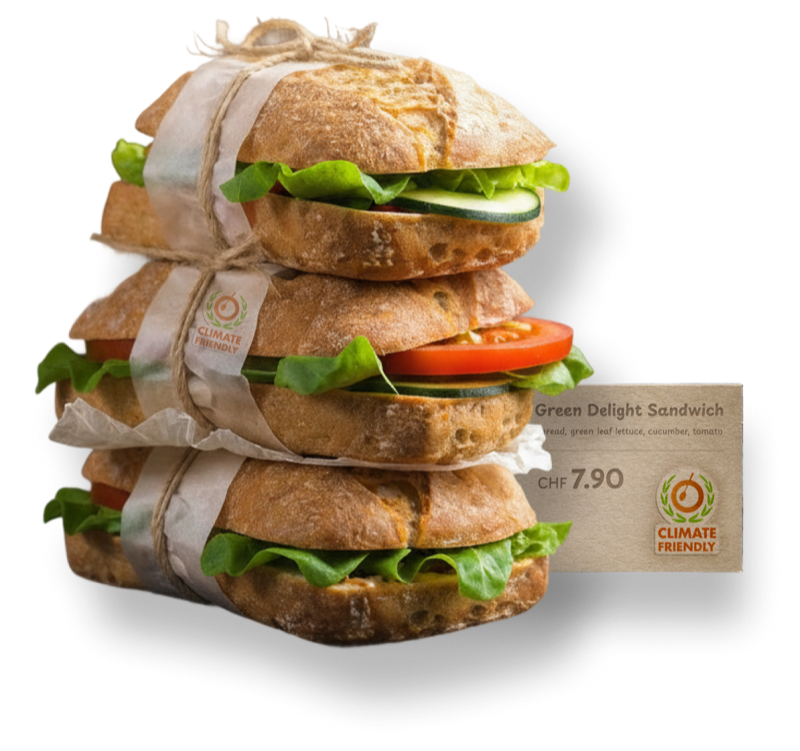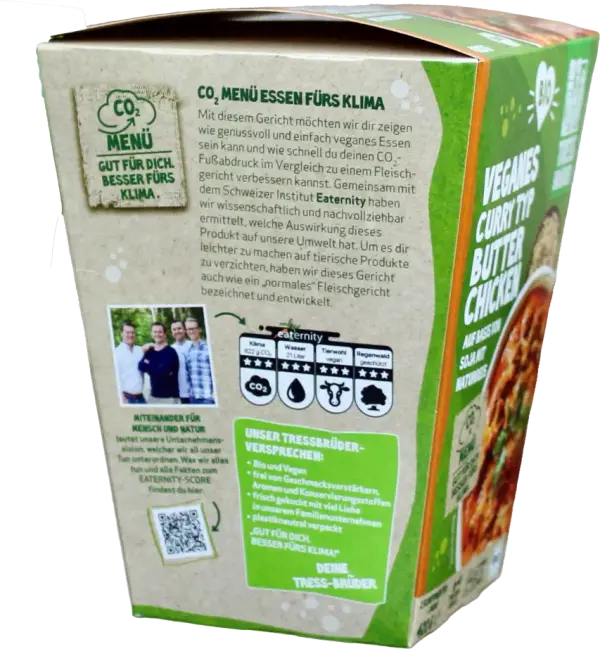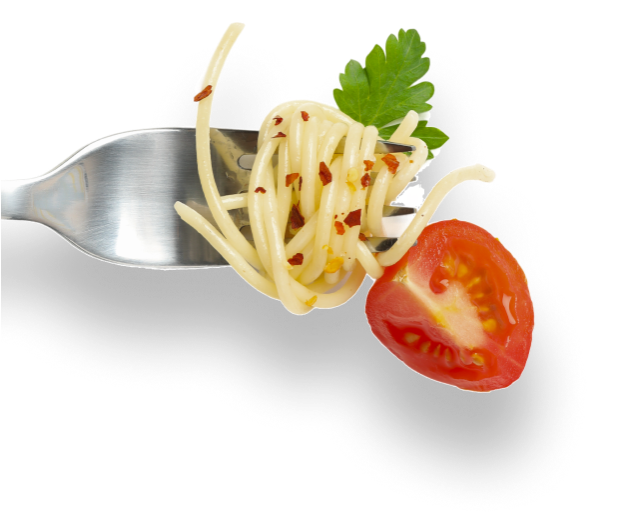Food is a climate problem. Let’s make it a solution.
Eaternity helps food businesses measure and lower their food carbon footprint—product by product, dish by dish.
Trusted climate scoring for leading restaurants, retailers and brands






Food generates 1/3 of global emissions
By making smarter choices, we can cut this by 50%
Join us in our mission to accelerate a future of sustainable food.
Eaternity Gastro and Forecast
Eaternity Score
Eaternity Gastro and Forecast
Restaurants
Make climate-friendly menus your competitive edge
Tools for sustainable menu planning. Score your recipes. Reduce CO₂ per dish. Plan menus that decrease food waste. Prove to your customers that meals can be both delicious and sustainable.
Brands
Be a brand that drives sustainable change
Climate impact scoring for food products. Give your customers what they're asking for: trusted, transparent data on the climate impact of your products.
Eaternity Score
Retailers
Lead the movement to better food choices
CO₂ labels and sustainability insights for retailers. Use the Eaternity Score to highlight the most sustainable foods, build customer trust, and support conscious shopping.


Real Stories. Real Progress.

At Sodexo, we remain committed to serving delicious, healthy, and planet-friendly meals - enhancing consumer satisfaction. We reaffirm our goal to reach 70% low-carbon meals by 2030. Thanks to Eaternity's data, our chefs are revisiting recipes and crafting new low-carbon dishes. It's a creative challenge they embrace with pride, knowing that every plate contributes to better health and helps shape a more sustainable tomorrow.
Mouna Fassi Daoudi
Sodexo Group Chief Sustainability Officer

For us, introducing the sustainability score and full disclosure of Veganz product, is part of an assessment of all Veganz products from the beginning. Equipped with the Eaternity label, a real added value is created for our consumers and it gives a unique insight into sustainability and trend-setting transparency in food production.
Veganz Team
Learn more about our clients and partners

EOS - ENVIRONMENTAL OPERATING SYSTEM
The open source platform for food systems research
A transparent foundation for scientists and researchers to model the environmental footprint of food systems with rigorous, peer-reviewed methodology.
It's built to support:
Life cycle assessments (LCA) of ingredients and meals
Comparative modeling of food systems and diets
Policy and academic research aligned with SDGs and Net Zero targets
This platform ensures results are reproducible, up-to-date, and openly documented—making it a trusted resource for evidence-based decision-making in climate science.
Join the leaders transforming the food system
0+
Restaurants cutting emissions dish by dish
0+
Stores offering climate-smart product choices
0+
Food climate scores calculated to date
Lead the change
Start working with us now
Learn & Explore
Discover insights about sustainable food and climate action
Loading featured projects...


